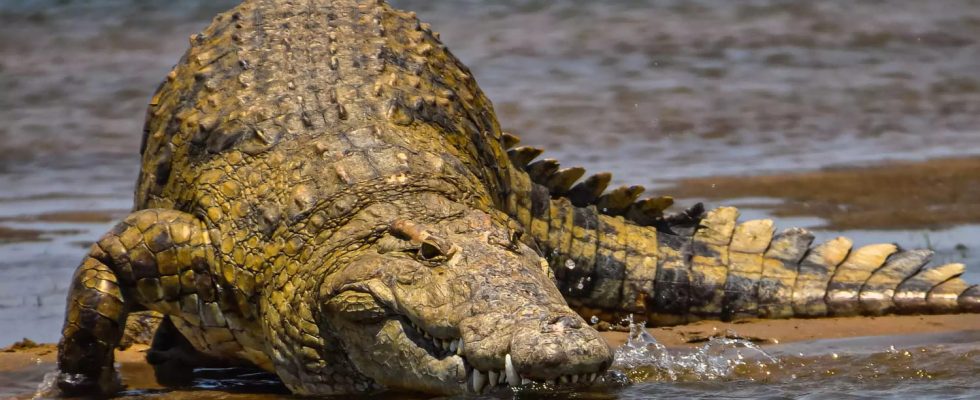Nile crocodiles respond to the cries of infants of species such as bonobos, chimpanzees, and humans. New research shows that crocodiles also seem to discriminate between levels of distress in calls.
Researchers have found that Nile crocodiles react to the crying of baby bonobos, chimpanzees and humans. They appear to be able to detect different levels of distress, according to research published in Proceedings of the Royal Society B, the Royal Society’s main biological research journal.
The researchers played audio recordings of crying infants to the crocodiles and found they were attracted to those who seemed most distressed. The reactions could be interpreted as predatory on the part of these large semi-aquatic reptiles, but the researchers believe it could also evoke a maternal instinct in female crocodiles.
Researchers used loudspeakers to broadcast the cries to around 300 Nile crocodiles at the Crocoparc in Agadir, Morocco, as reported by The Independent. Many crocodiles reacted quickly. “Our experiments do not mean that crocodiles can only be attracted by distress calls. They are opportunistic hunters,” the study authors wrote. “But they suggest that the propensity of these animals to react increases in the presence of acoustic characteristics marking a level of distress.”
The researchers compared these results to another study where the same cry was broadcast to a group of humans. The study showed that humans and crocodiles use different criteria to assess the distress of other species, and that humans’ judgment tends to be less accurate. While humans reacted primarily to the sound level of crying, crocodiles reacted based on levels of “deterministic chaos, harmonicity, and spectral saliences.”
The authors noted that crocodiles could recognize levels of distress from species far removed from them. Nile crocodiles can reach a length of around 6 meters and weigh up to 750 kilograms, according to National Geographic. These creatures “live throughout sub-Saharan Africa, the Nile basin and Madagascar, in rivers, freshwater marshes and mangroves,” he adds.
According to National Geographic, Nile crocodiles typically live near humans, which means encounters are relatively common. Although the exact numbers are uncertain, it is estimated that up to 200 people could die each year under the jaws of a Nile crocodile.
